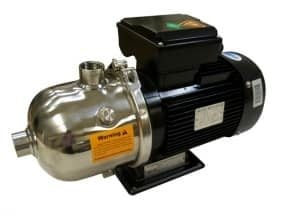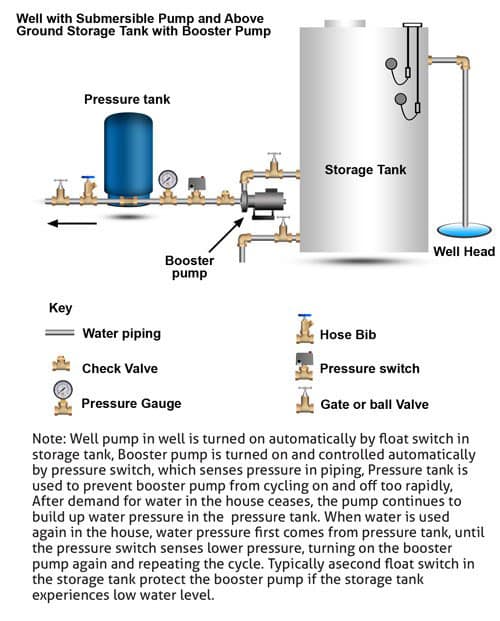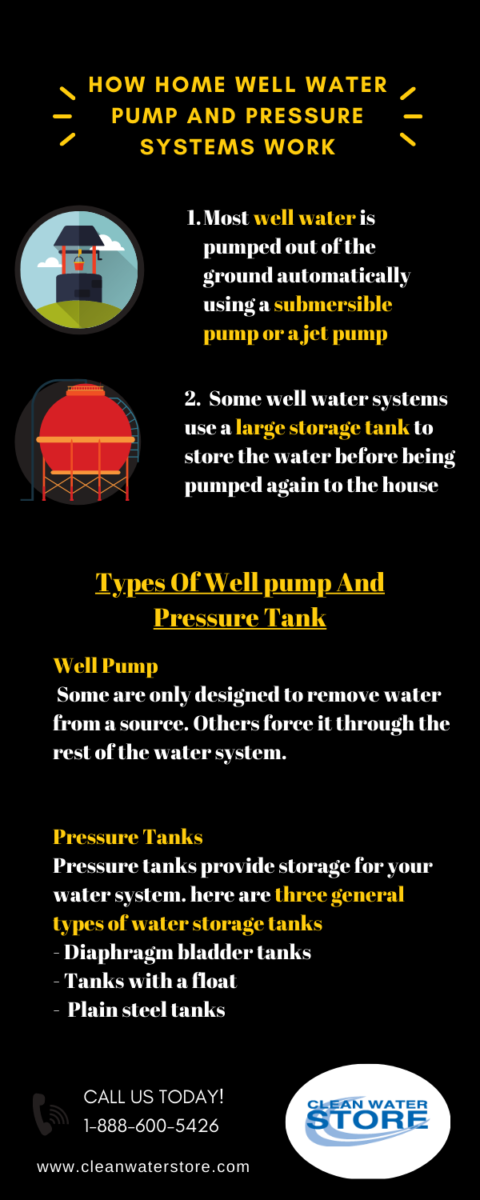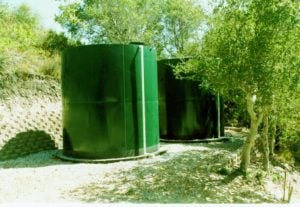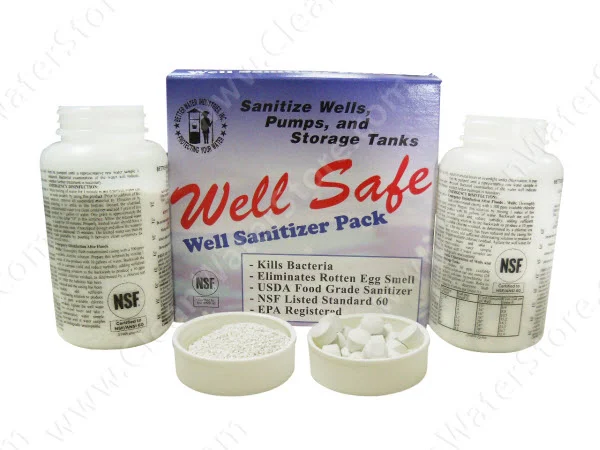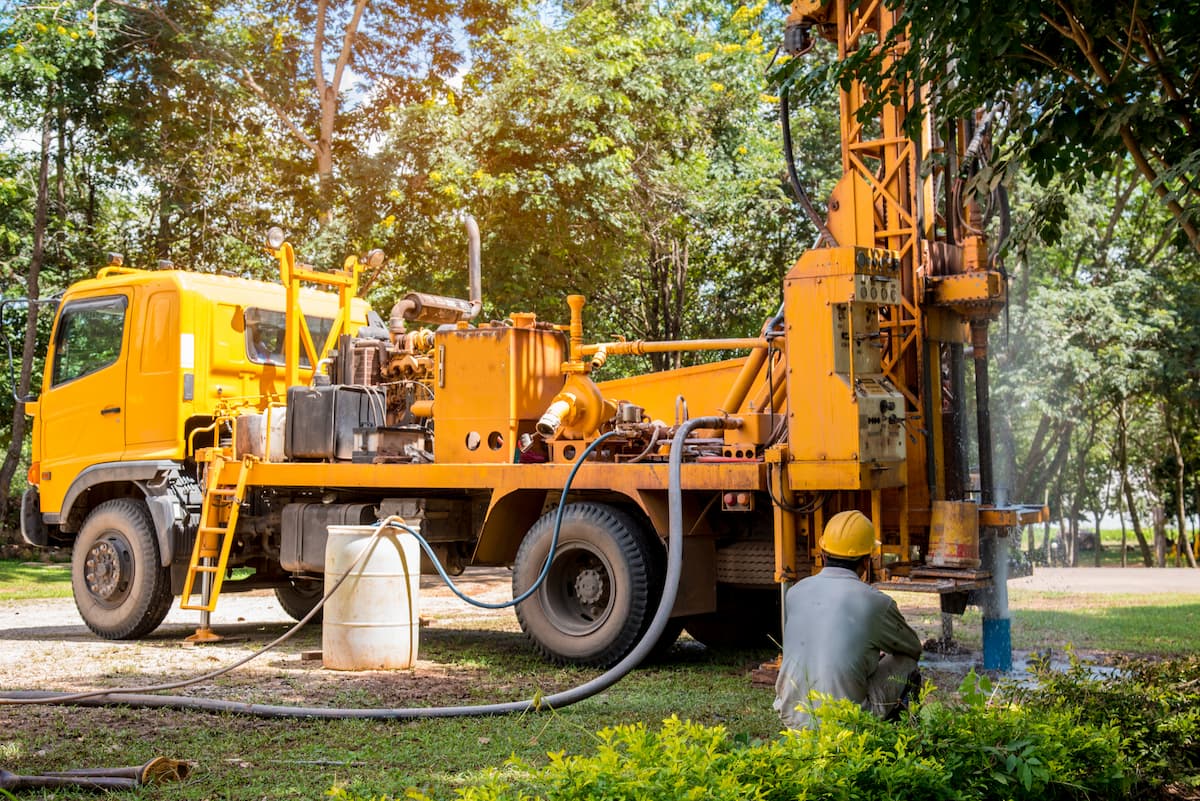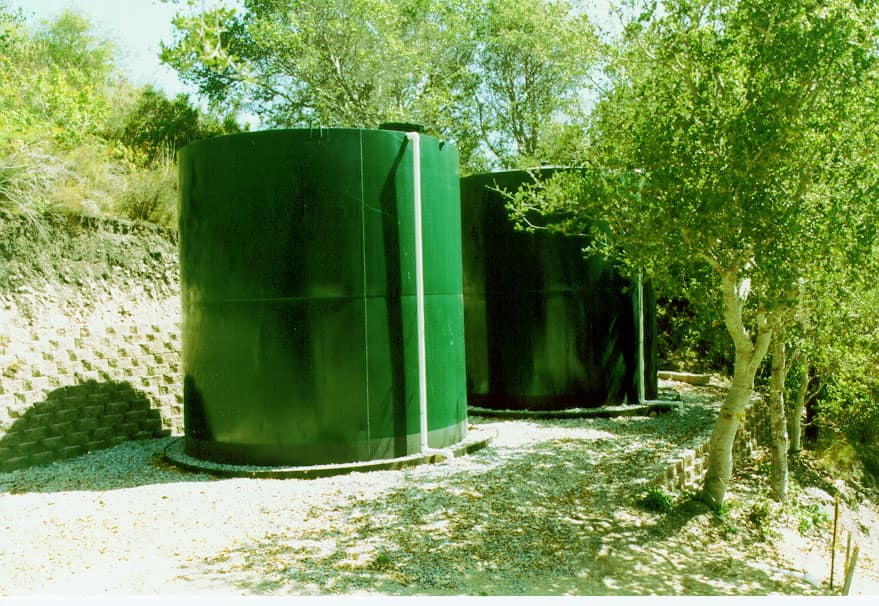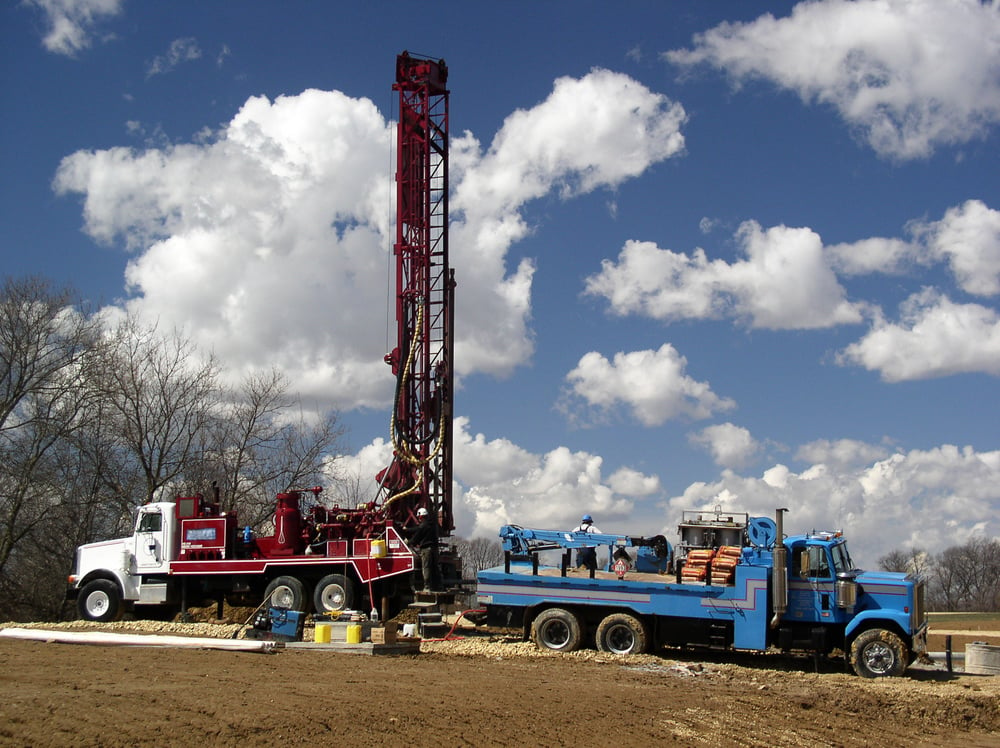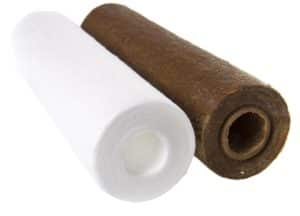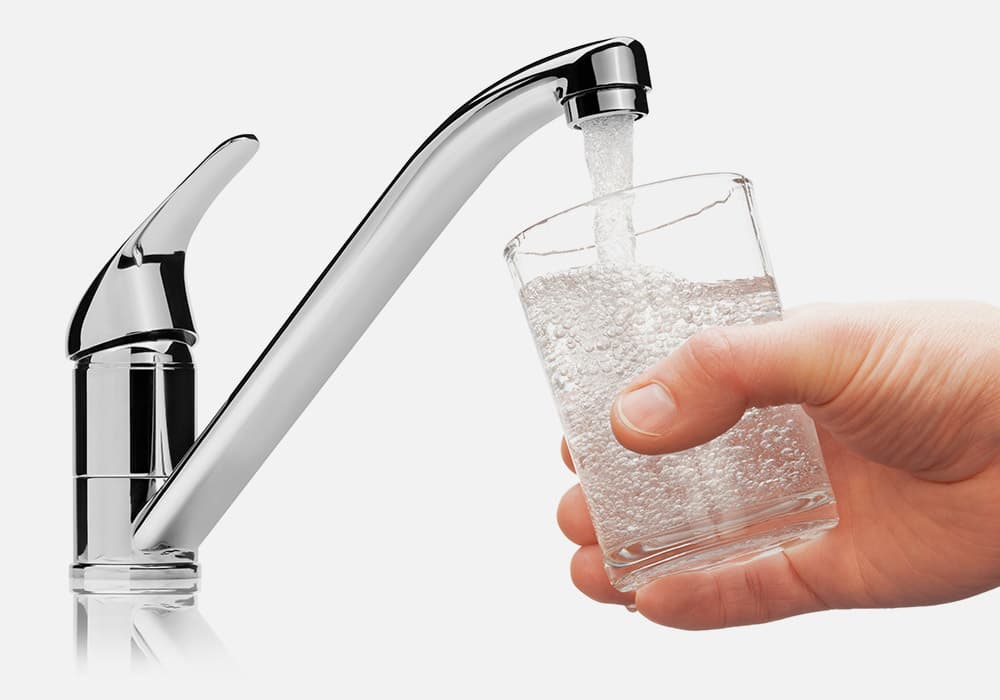How Do Home Well Water Pump and Pressure Systems Work
Wondering How Do Home Well Water Pump and Pressure Systems Work?
Knowing the basics of how your well water system functions is important when selecting a water treatment system because if the wrong type of treatment system is used, it can adversely affect the water pressure and flow rate inside the home.
For example, if the well uses a pressure tank, a water treatment system must be installed after the pressure tank to avoid causing damage to the well pump.
When you open a faucet in your home or turn on the shower or bath you expect water to flow at a certain flow rate and with good water pressure.
Water pressure in your pipes and pressure system causes your water to flow. If your home is on city utilities, water pressure is controlled by your local water company or utility.
If your home is on a well, you need a pump and pressure tank to build that pressure unless you have a storage tank high enough on a hill nearby to get gravity pressure. Some folks will have a cistern water pump system, where the water is stored in an underground concrete or fiberglass tank called a cistern.
The pressure tank in your well system creates water pressure by using compressed air. Because of this pressure, when a valve or faucet is opened in your home the water is pushed out of the tank through the pipes in your home.
When the water in the pressure tank drops below a preset level, a pressure switch is activated which turns on the pump. The pump then refills the pressure tank. A check valve (a one-way valve) keeps the pressure in your pressure tank from flowing back down the well. The combination of the pressure tank, pressure switch, check valve and pump is what allows water to flow through your home.
Pressure tanks, which also act as mini storage tanks for your home, are generally set to keep pressure within 20 pounds per square inch (PSI) of your start and stop settings.
For example, many homes on well water have the pressure set to turn on at 40 PSI and off at 60 PSI. If the pressure drops below 40 PSI, the pump turns on and brings the pressure back to 60 PSI before cutting off and turning off the pump again.
The pressure tank acts as a reservoir and allows water to be drawn from the tank without the pump turning on and off each time the water is turned on.
This protects the pump and extends the life of the pump. A pressure tank also cuts back on instances of “water-hammer” and reduces air in the pipes and controls the pressure in your water system.
Here is more information on typical well pressure tank installation. This describes a submersible well pump and not an above ground well pump.
Some folks will ask “where is the well pump located?” Look for your well head in pump sheds, under ground in vaults or in the middle of a field. It can be located in various places but it is usually in a place where a pumping rig can drive in and service it.
Well Water Pump and Pressure System Basics
Most well water is pumped out of the ground automatically using a submersible pump or a jet pump that sits on top of the ground and draws water out of the ground to create water pressure for the home.
Some well water systems use a large storage tank to store the water before being pumped again to the house. Other well water systems are gravity fed and use gravity to provide water pressure to the house.
How does a well work?
A home water system has two important components besides the well itself – a pump and a pressure tank.  Well Pumps
Well Pumps
There are many types and sizes of pumps for a home pressurized water system. Some are only designed to remove water from a source. Others not only remove the water but also force it through the rest of the water system. Most homes in the U.S and Canada use submersible pumps. Submersible well pumps are proven reliable pump.
A shallow well jet pump is sometimes used when the groundwater is not more than about 30 feet deep. Jet pumps use a jet that pumps some water back down the well and allows the pump to draw up water to the surface.
Some pumps are for special jobs such as boosting pressure or supplying a special outlet. Booster pumps are to be installed after a storage tank.
Pressure Tanks
Pressure tanks provide storage for your water system. There are three general types of water storage tanks:
- Diaphragm bladder tanks with permanent separation between the air and water;
- Tanks with a float or water separating the air from the water (not used in recent years)
- Air to Water galvanized steel tanks (not in general use, most have been replaced with bladder tanks)
Diaphragm bladder tanks are the most common type used in modern water systems. These tanks have a flexible rubber diaphragm inside that separates the air and water. When water is pumped into the tank, it compresses the air and builds up pressure to draw water. The compressed air then pushes the water out of the tank when a faucet is turned on.
Float or water-separating tanks have a float that rises and falls with the water level, separating the air from the water. However, these tanks are no longer used as they tend to become waterlogged over time.
Air to Water galvanized steel tanks were once popular but have been replaced by bladder tanks due to their tendency to rust and leak.
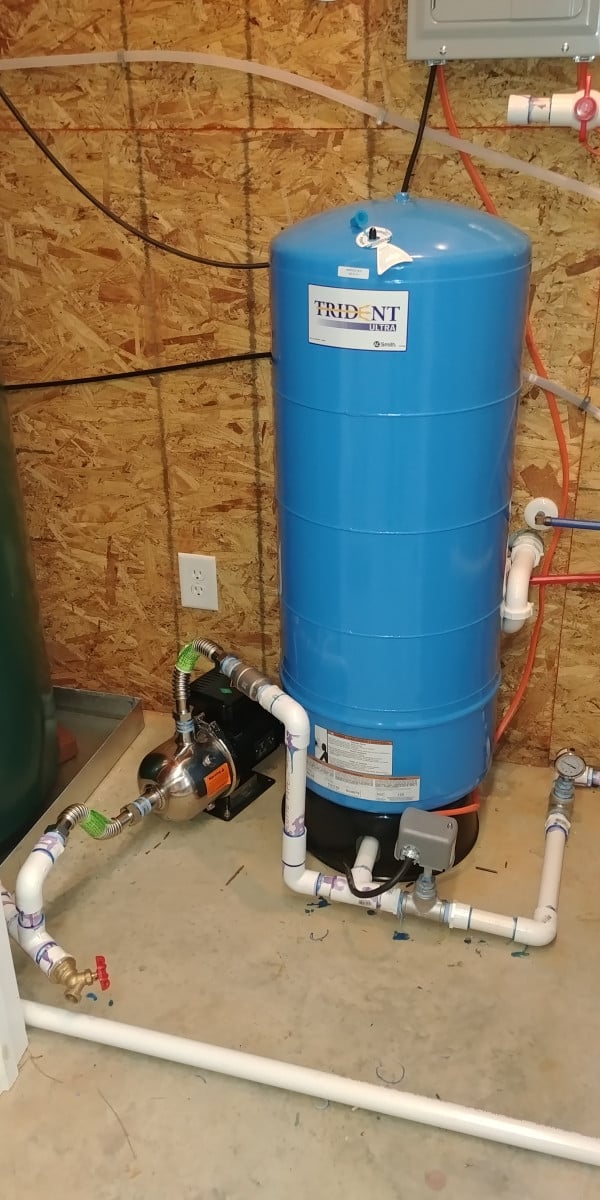
Maintenance Tips
Proper maintenance of well pumps and pressure tanks is essential to ensure a continuous and reliable water supply. Here are some tips to help keep your system running smoothly:
- Regularly check the pressure gauge on your pressure tank. It should be between 40-60 psi (pounds per square inch). If it's consistently lower or higher, it may indicate an issue with the pump or tank.
- Inspect the pump and pressure tank for any signs of damage, leaks, or unusual noises.
- Follow the manufacturer's recommended schedule for replacing the pressure tank's air release valve. This will help prevent waterlogging and ensure proper functioning.
- Keep the area around your well pump clean and free from debris to prevent clogs or damage.
- Have a professional inspect and service your well pump and pressure tank at least once a year.
By following these maintenance tips, you can ensure your well pump and pressure tank continue to provide you with a reliable water supply for years to come. Additionally, it is important to regularly test your water quality and have your well system professionally serviced every few years to catch any potential issues early on.
This will not only help maintain the longevity of your equipment but also ensure the safety and quality of your drinking water. Remember, prevention is key when it comes to maintaining a well system. So take the time to properly care for your well pump and pressure tank, and you'll have peace of mind knowing that your water supply is in good hands.
Keep in mind that different states and provinces may have different regulations and guidelines for well-maintenance, so be sure to check with your local authorities for specific recommendations. With proper care and maintenance, your well pump and pressure tank will continue to provide you with clean and reliable water for many years to come.
Regular maintenance and proper care of your well pump and pressure tank are essential in keeping them functioning efficiently. Don't hesitate to seek professional help when needed, and always prioritize the safety and quality of your drinking water.
With these tips in mind, you can rest assured that your well system will continue to provide you with clean and healthy water for all your household needs.
Additional storage
Some well owners like to make arrangements for additional water storage tanks. Generally speaking, the additional storage capacity of one day's water supply is sufficient.
Additional water storage is useful when there are power outages and other emergencies. It can also be beneficial for those who live in areas with frequent droughts or have limited access to water resources.
However, it is important to note that having additional storage does not replace the need for a reliable pump and pressure tank system. It should be seen as a supplement rather than a substitute.
When installing additional storage tanks, make sure they are properly sealed to prevent contamination and maintain water quality. It is also recommended to regularly clean and disinfect these tanks to prevent any bacteria or algae growth.
Overall, adding extra storage capacity can provide convenience and peace of mind for well owners, but it should not be relied upon as the sole source of water supply. Proper maintenance and care of your pump and pressure tank system should always remain a top priority.
So, consider adding extra storage as a backup plan, but don't neglect the proper maintenance of your primary well system. With these tips and guidelines in mind, you can ensure a continuous supply of clean and safe water for your household needs.
How To Find Information on Your Well
Thanks for reading “How Do Home Well Water Pump and Pressure Systems Work”.
Check out: 7 Signs Your Water Well is in Trouble
Here is how to find out more information on your well:
Contact the well contractor who installed your well. Or find a water well contractor in your area by looking in your local telephone directory.
Many states maintain lists of licensed or registered well drillers.
Contact your local health department to find out where in your state you can locate a list.
Most states also have state water well associations, state well driller associations, or state groundwater associations. To get a list of these associations, you can contact the National Ground Water Association at 800-551-7379 or www.ngwa.org.


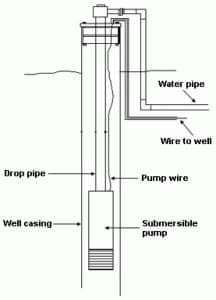
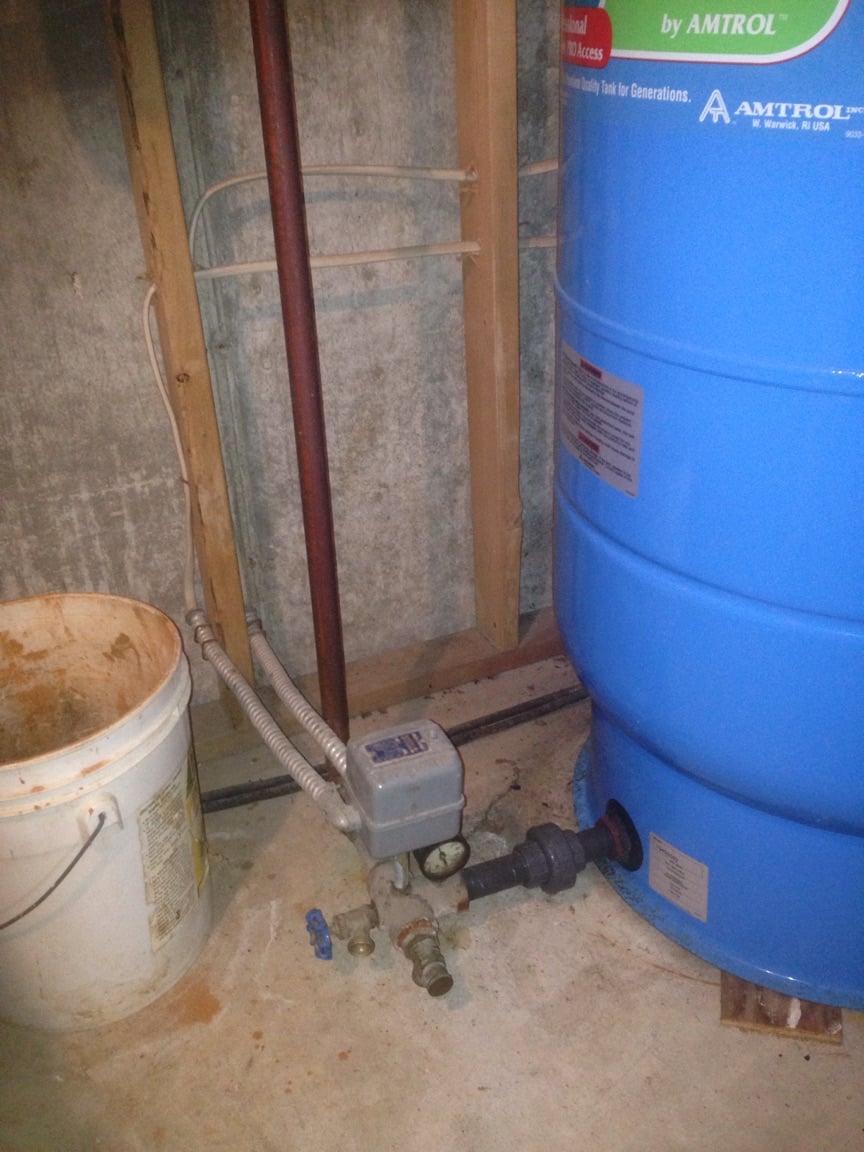
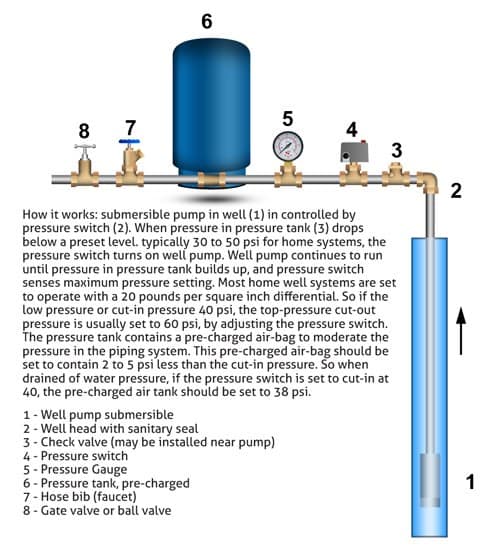 Well Pumps
Well Pumps